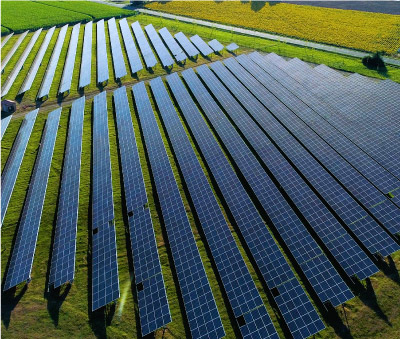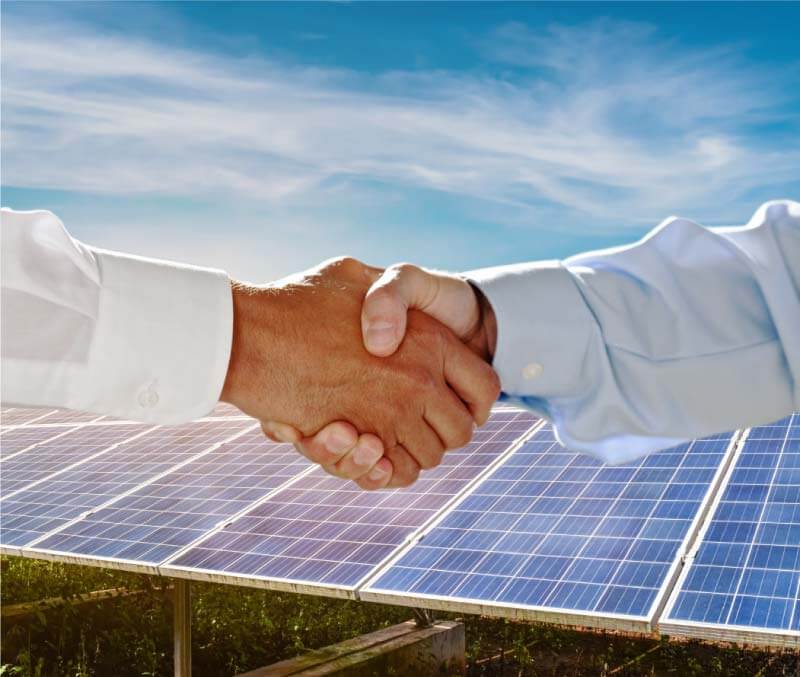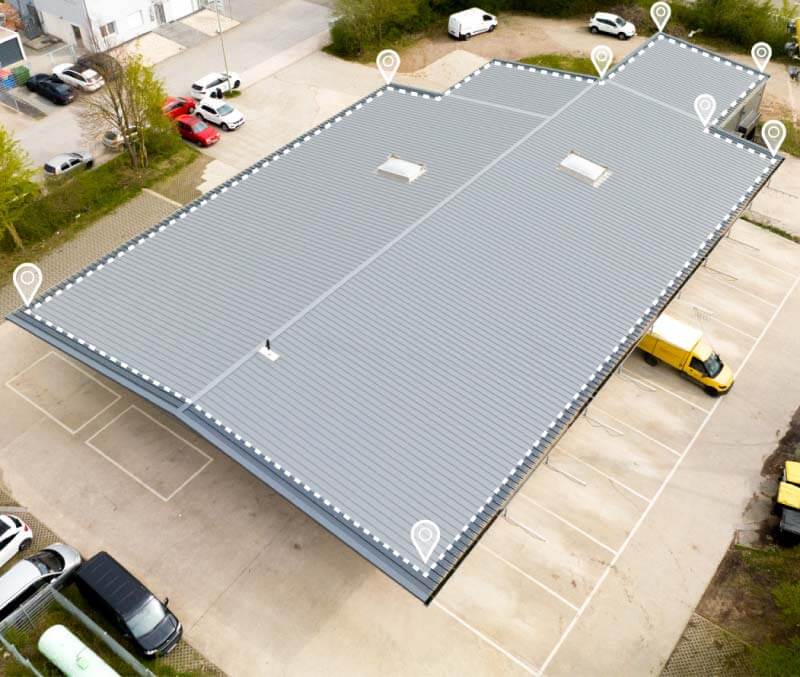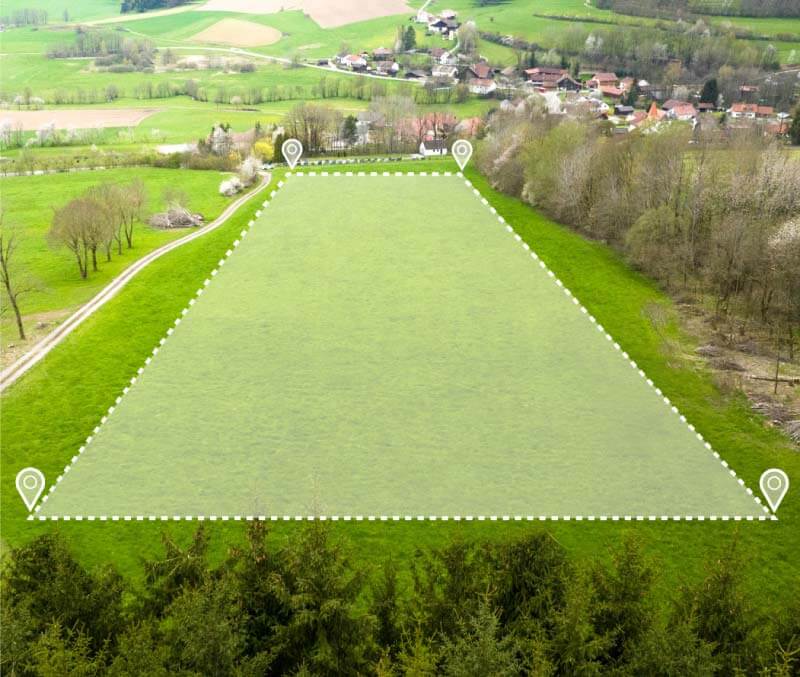History of photovoltaics
Table of contents
In 1839 , the French scientist Alexandre Edmond Becquerel discovered the photoelectric effect during electrochemical experiments. He placed two coated platinum electrodes in a container with an electrolyte and determined the current flowing between the electrodes. Becquerel found that the current changed when the container was exposed to light. In this case, it was the external photoelectric effect, in which electrons emerge from a solid when exposed to light.
In 1873 , the British engineer Willoughby Smith and his assistant Joseph May discovered that the semiconductor selenium changes its resistance when irradiated with light. They thus observed for the first time the internal photoelectric effect relevant to photovoltaics, in which electrons in the semiconductor are torn from their bonds by light and are thus available as free charge carriers in the solid state.
In 1876 , the Englishmen William Adams and Richard Day discovered that a selenium rod fitted with platinum electrodes can produce electrical energy when exposed to light.
⇒ This was the first proof that a solid can convert light energy directly into electrical energy.
In 1883 , the New York inventor Charles Fritts built a small "module" of selenium cells with an area of approx. 30 cm2, which had an efficiency of just under 1%. He coated the selenium cells with a wafer-thin gold electrode. This was "the first time that the direct conversion of light into electrical energy was demonstrated".
In 1916 , the Polish chemist Jan Mit invented the crystal pulling process named after him. This made it possible to produce semiconductor crystals as high-quality single crystals.
In 1950 , the American Nobel Prize winner William B. Shockley (1910-1989) presented an explanation of how the pn junction works, thereby laying the theoretical foundation for the solar cells used today.
⇒ On this basis, Daryl Chapin, Calvin Fuller and Gerald Pearson developed the first silicon solar cell with an area of 2 cm2 and an efficiency of up to 6% and presented it to the public on April 25, 1954 .
⇒ The New York Times featured the event on its front page the next day, promising readers "the fulfillment of one of mankind's greatest wishes - the harnessing of the sun's almost unlimited energy.
In the following years, the efficiency was increased to 10%. Due to the high price of solar modules (the price per watt was around 1000 times the current price), only special applications were initially considered.
In 1958 ,the first satellite with solar cells on board was launched: the American satellite Vanguard I. The transmitter drew its energy from six solar cells attached to the outer skin of the satellite and operated until 1964. The success of this project led to photovoltaics becoming established as an energy source for satellites.
⇒ Developments in the 1960s were therefore driven by space travel.
In 1973 , the oil crisis brought about a change in thinking. Suddenly, alternative energy sources became the focus of interest.
In 1977 , a solar module was developed at Sandia Laboratories in New Mexico with the aim of manufacturing a standard product for cost-effective mass production.
In 1979 , the incident at the Harrisburg nuclear power plant and, in particular, the reactor disaster in Chernobyl (1986) finally increased the pressure on governments to seek new solutions for energy supply.
In 1980 , the USA, Japan and Germany in particular invested their efforts in promoting photovoltaic research. In addition, funding programs were launched to encourage the construction of grid-connected photovoltaic systems on single-family homes.
In 1990 , the 1000 Roofs Program was introduced in Germany, which provided valuable insights into the reliability of modules and inverters as well as issues relating to grid feed-in.
The Electricity Feed-In Act was introduced in 1991 . It obliged energy suppliers to accept electricity from small renewable power plants (wind, photovoltaics, etc.).
In 1995 , the Solarenergie-Förderverein Aachen eV achieved the introduction of cost-covering remuneration of DM 2 per kWh for electricity from photovoltaic systems in Aachen, which became known throughout Germany as the Aachen model .
In 2000 , the Renewable Energy Sources Act (EEG) was introduced on the basis of the Aachen model. This successor to the Electricity Feed-in Act set cost-covering remuneration rates for the various renewable energy sources and led to an unexpected boom in photovoltaics.
The increase in global growth
The cumulative installed photovoltaic capacity in Germany rose from just over 100 MWp in 2000 to around 38 GWp in 2014. This corresponds to average annual growth of around 50% . By the end of 2022, photovoltaics in Germany will have a net nominal output of 63 gigawatts.
After Germany was the driving factor for many years, other countries are now increasingly catching up. China is experiencing the strongest growth with annual installations of over 10 GWp in some cases.
Following the reactor disaster in Fukushima, Japan has relied heavily on photovoltaics, which is reflected in significant expansion and a cumulative installed capacity of 13 GWp.
This was followed by boom years in Italy and Spain. The USA is gradually waking up from its photovoltaic slumber with 6 GWp added in 2014.
Regardless of the individual countries, the global growth of photovoltaics has increased rapidly in recent years . The cumulative installed PV output has increased from 700 MWp in 2000 to almost 177 GWp in 2014 (250 times the initial value).
In recent years , more energy has been generated from renewables than from coal across Europe. In total, more than 30 percent of electricity generation in Europe is already produced from renewable energy sources. Financially strong countries such as Germany, the UK and Denmark have made the largest contribution to this. In Denmark, over 70% of the electricity generated there comes from renewable energies. This includes wind, biomass and photovoltaics. The opportunity to invest in photovoltaics is arousing the interest of many investors in environmentally friendly investments - both privately and commercially.
Efficient funding instruments
Germany already has a range of experience with funding programs for photovoltaics. In the 1990s, the 1000 Roofs Program was launched under the auspices of the Federal Ministry of Education and Research. This provided funding for photovoltaic investment for the construction of systems amounting to 70% of the investment sum. The declared aim was to "evaluate the state of the art" and to determine the "development needs".
⇒ Between 1991 and 1995, almost 2000 PV systems were installed as part of the program.
A parallel measurement and evaluation program actually enabled valuable operating experience to be gathered. After the funding pot was exhausted, the briefly created market collapsed again.
⇒ The provision of the high investment subsidy of 70% was problematic. System operators paid little attention to the level of installation costs, and the system prices were usually close to the specified upper limit of DM 28,000/kWp.
⇒ The evaluation of the program also showed that systems with defects were not repaired because no financial support was provided for the repairs.
In the following years, some federal states introduced further funding programs based on investment grants. However, as these were quickly oversubscribed depending on the cash situation, it was not possible for a steady market to develop.
⇒ The situation did not change until the introduction of cost-covering remuneration by various municipal utilities (Aachen model) and finally the launch of the EEG in 2000.
The EEG was designed from the outset as a market introduction program and was intended to lead to a price reduction through the mass production of PV systems.
What are the main advantages of this model compared to funding via investment grants?
- As the money for the feed-in tariff is raised from electricity customers via the EEG surcharge, there are no cyclically empty funding pots, as is typical for public investment programs. This stabilizes the market and increases manufacturers' willingness to invest.
- The system operator only receives a return on his invested capital if he works economically. He is therefore obliged to purchase technically sophisticated and cost-effective technology. In addition, he will repair the system in his own interest in the event of a defect and operate it for as long as possible.
- By setting a reduction in the feed-in tariff depending on when the system is commissioned, the price and also the market volume can be controlled within certain limits.
The feed-in tariff is currently set on a quarterly basis, depending on the number of new installations in recent months. The German government has set a target corridor of 2.4 to 2.6 GWp per year. The remuneration rates for ground-mounted systems are determined using a tendering system. The principle of cost-covering remuneration for solar power fed into the grid laid down in the EEG has now been adopted by a number of countries.
⇒ The EEG stimulated the mass production of solar modules. As planned, this led to an impressive reduction in costs.
Price and remuneration development
Price development of solar modules
⇒ Since 1990, prices have fallen from 28 euros to cents in some cases. However, prices could rise again in the future.
The global PV market has grown by over 50% annually since 2000. Assuming this growth continues, the installed PV capacity will be around 11,500 GWp by 2025. A price of a good 20 cents can then still be expected. If growth is only 25%, we may even end up above this in 2025.
Development of the feed-in tariff
The reduction in the cost of solar modules was accompanied by a similarly sharp reduction in remuneration. The EEG was lowered accordingly. Starting at 58 cents/kwh, the remuneration for small roof systems fell to 12 cents/kWh within 11 years, a reduction to less than a quarter of the original value.
Roof systems still receive a few cents per kilowatt hour as a result. This puts photovoltaics below the costs of biomass and offshore wind power.
Ground-mounted systems are roughly on a par with inland wind power (non shore)!
⇒ Grid parity was achieved in around 2012.
This refers to the point at which electricity from PV systems is cheaper than the electricity price for normal tariff customers.
Occasionally, the opinion is expressed that feed-in tariffs are no longer necessary from this point onwards. However, this would take away a certain security, especially for larger photovoltaic investments, as the yields are less predictable. A certain type of feed-in tariff will therefore have to continue to exist. This is the only way to achieve a stable market, which is necessary for further cost reductions and the achievement of the expansion targets for renewable energies.
Write to us
Do you have a roof area of 1,000 square meters or more? Then contact us for roof space rental!
Would you like to lease your land from 1 hectare? Then write to us.
Would you like to buy a photovoltaic system? Let us send you the offers for photovoltaic investments currently for sale by e-mail.



